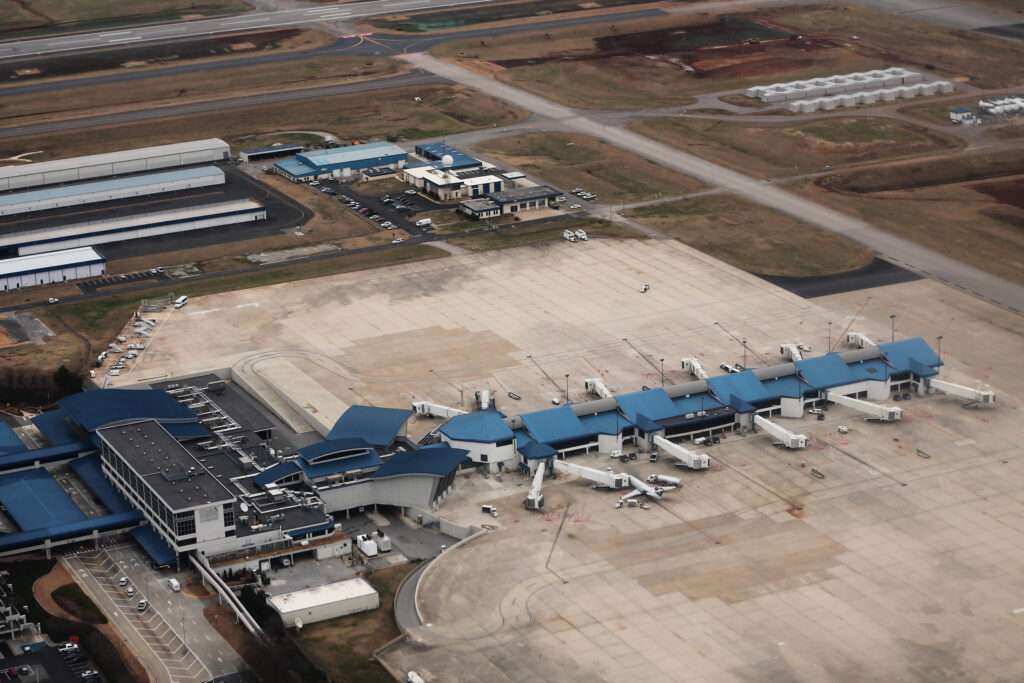Huntsville, Alabama, nicknamed “Rocket City, USA,” is synonymous with aerospace innovation.
But long before rockets soared into the sky, a different kind of flight path took root – one with a rich history reflected in Huntsville International Airport (HSV).
Early Days: Taking Flight in the 1930s
Huntsville’s aviation journey began humbly in the early 1930s with Huntsville Flying Field, also known as Mayfair Airport, located south of the city.
This early airfield consisted of basic sod runways, lacking any lighting or modern amenities.
Despite its simplicity, it marked the city’s initial foray into air travel.
By 1934, the airport had expanded to include four dirt/sod runways near the current intersection of Whitesburg Drive and Bob Wallace Avenue.
World War II and the Rise of Huntsville Municipal Airport
The demands of World War II spurred the development of a dedicated municipal airport.
Huntsville Municipal Airport opened in 1941 south of downtown, boasting two paved runways, including the still-existing Runway 18/36.
The terminal itself was a modest wooden structure, but it represented a significant advancement in the city’s air travel capabilities.
The National Weather Service even established a presence at the airport in 1958, highlighting its growing importance.
This airport witnessed the arrival of the jet age in the late 1960s.
United Airlines ushered in a new era with their 727s, forever changing the travel landscape for Huntsville.
However, the limitations of the location, particularly runway length, became increasingly apparent.
The Birth of Huntsville Jetport (HSV): Embracing the Jet Age
The need for a modern airport equipped to handle larger jet aircraft became undeniable.
In October 1967, Huntsville entered a new chapter in air travel with the official opening of Huntsville Jetport (HSV).

Located west of the city along I-565, this purpose-built facility boasted two long parallel runways and a terminal building designed for the jet age.
The ribbon-cutting ceremony in 1968 marked a significant turning point for Alabama, solidifying its commitment to modern air travel.
The new airport, now known as Huntsville International Airport, wasn’t just about efficiency.
It also embraced the city’s aerospace heritage.
The terminal featured murals depicting aviation and space exploration scenes, a subtle nod to Huntsville’s role in the space race.
Growth and Expansion: Keeping Pace with a Dynamic City
Huntsville International Airport hasn’t rested on its laurels.
Throughout the years, it has undergone significant expansion and improvement projects to keep pace with the city’s growth.
A new 228-foot air traffic control tower, inaugurated in 2008, exemplifies this commitment to modernization.
The airport has also seen consistent expansion of its terminal, adding more gates, concession areas, and amenities for passengers.
A recent $65 million terminal expansion project reflects the airport’s dedication to providing a comfortable and convenient travel experience.
A Gateway to the World: Cargo and International Travel
Huntsville International Airport, Alabama isn’t just a hub for passenger travel.
It holds the distinction of being the largest cargo-handling airport in Alabama.
With established routes to Europe, Mexico, and Hong Kong, HSV plays a vital role in the city’s economic development, facilitating the import and export of goods.
The airport’s status as an international airport further strengthens Huntsville’s global connections.
This not only benefits businesses but also fosters cultural exchange and tourism.
Huntsville International Airport, Alabama continues to evolve alongside the city it serves.
Future plans include further expansion and modernization initiatives to accommodate the ever-growing demand for air travel.
With its commitment to innovation and its deep connection to Huntsville’s aerospace heritage, Huntsville International Airport is poised to remain a crucial gateway for the “Rocket City” as it continues its journey into the future.

Click the banner to subscribe to our weekly newsleter.

Click the photo to join our WhatsApp channel so then you can stay up to date with everything going on in the aviation industry!









